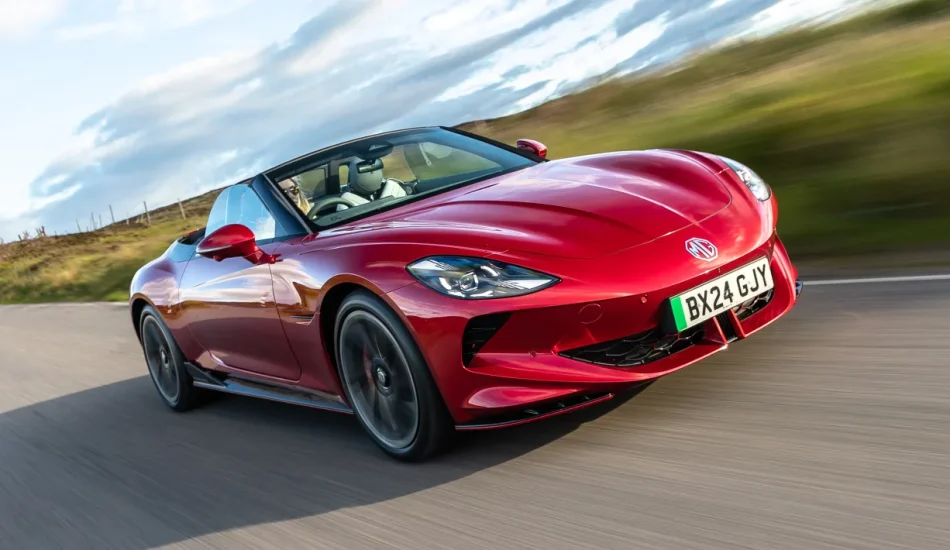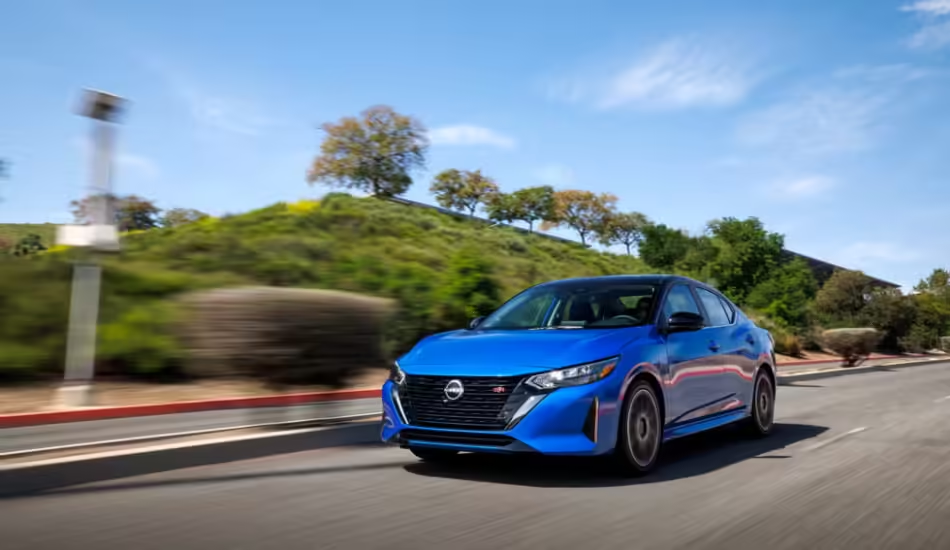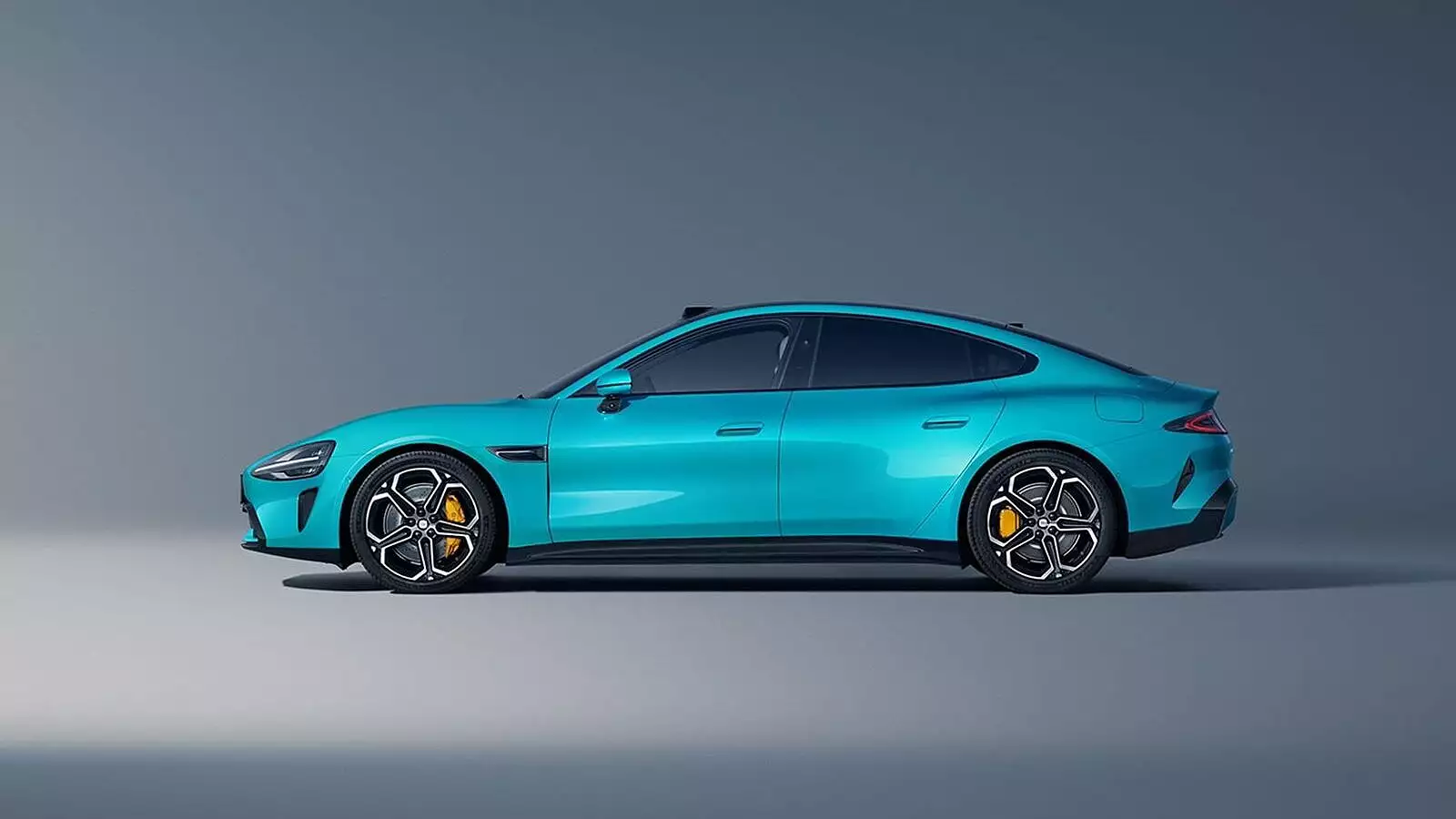
Xiaomi SU7: Beijing, CHINA, 28 December 2023 – Xiaomi held the Xiaomi EV Technology Launch, officially unveiling the five core technologies of Xiaomi EV – e-motor, battery, Xiaomi die casting, Xiaomi pilot autonomous driving and smart cabin. By developing fundamental core technologies, Xiaomi aims to redefine the technology of the automotive industry. Xiaomi EV’s first product – the highly anticipated Xiaomi SU7 – has been “pre-launched”, with its design, performance, range, safety and other details making their global debut. Positioned as a “full-size high-performance eco-technology sedan”, the Xiaomi SU7 aims to push the boundaries of performance, ecosystem and mobile smart space. To quote a phrase from Chinese poetry, “With firm steps, we cross its summit”. Lei Jun, Founder, Chairman and CEO of Xiaomi Group, stated that Xiaomi’s entry into the automotive industry marks a significant leap from the smartphone industry and a crucial step towards closing the loop of the human x car x home smart ecosystem. Lei Jun went on to say that the century-old automotive industry has little room for manoeuvre today: “Xiaomi has decided to invest tenfold, starting with the development of fundamental core technologies, and is committed to building an outstanding vehicle. Through 15 to 20 years of effort, Xiaomi aims to become one of the top five global automakers.
- Gets a claimed range of up to 800km
- 0-100kmph in just 2.8 seconds
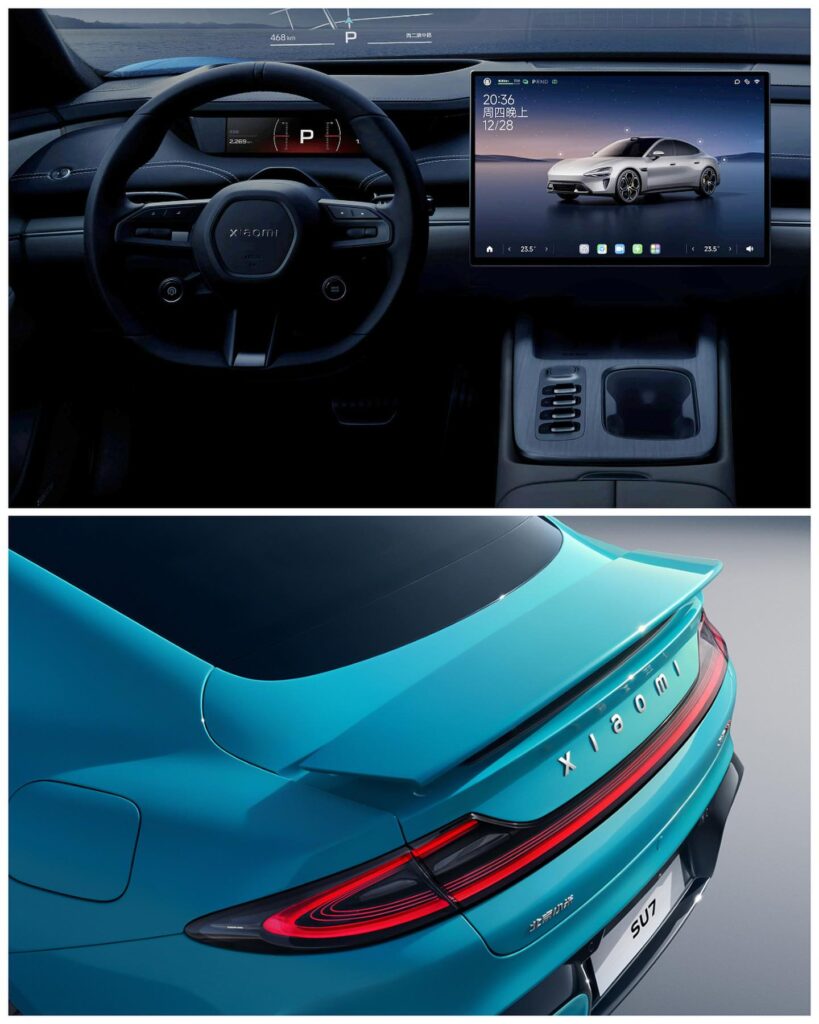
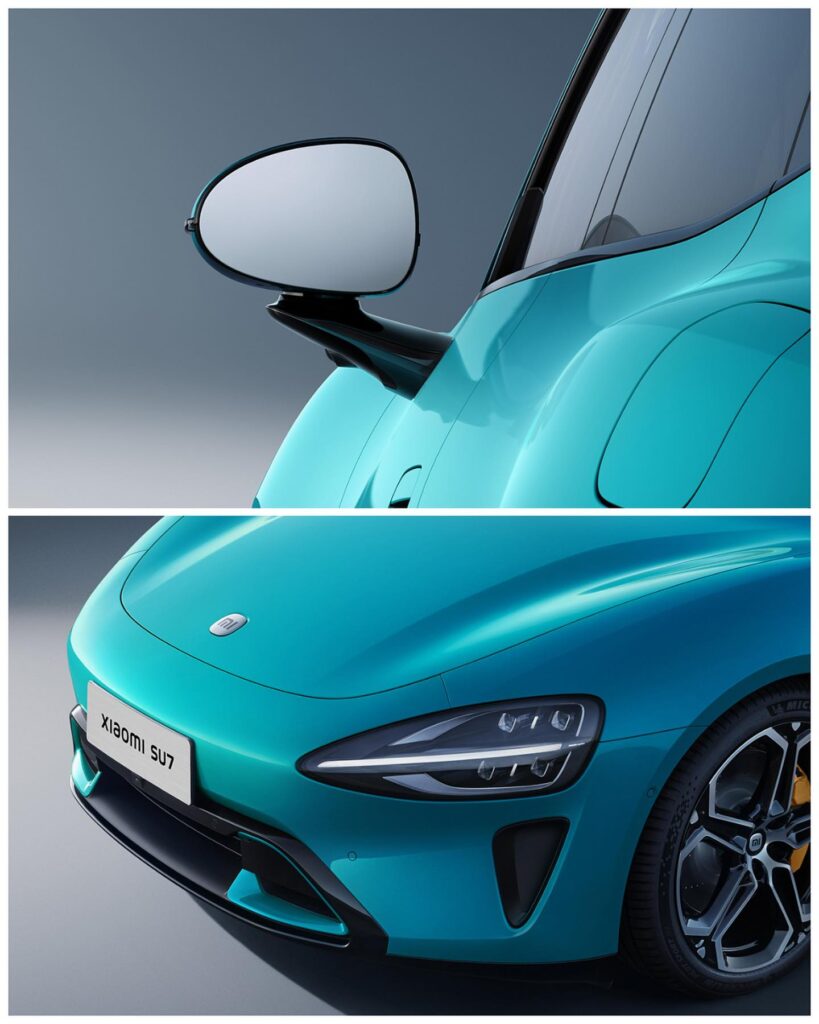
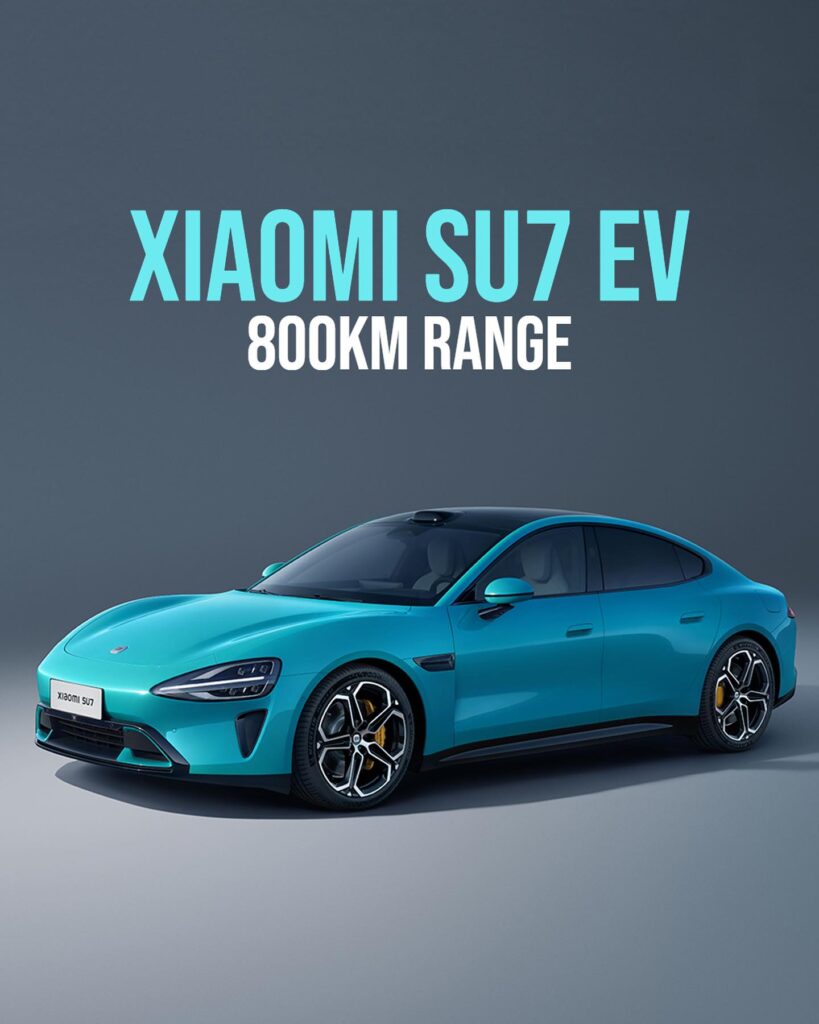
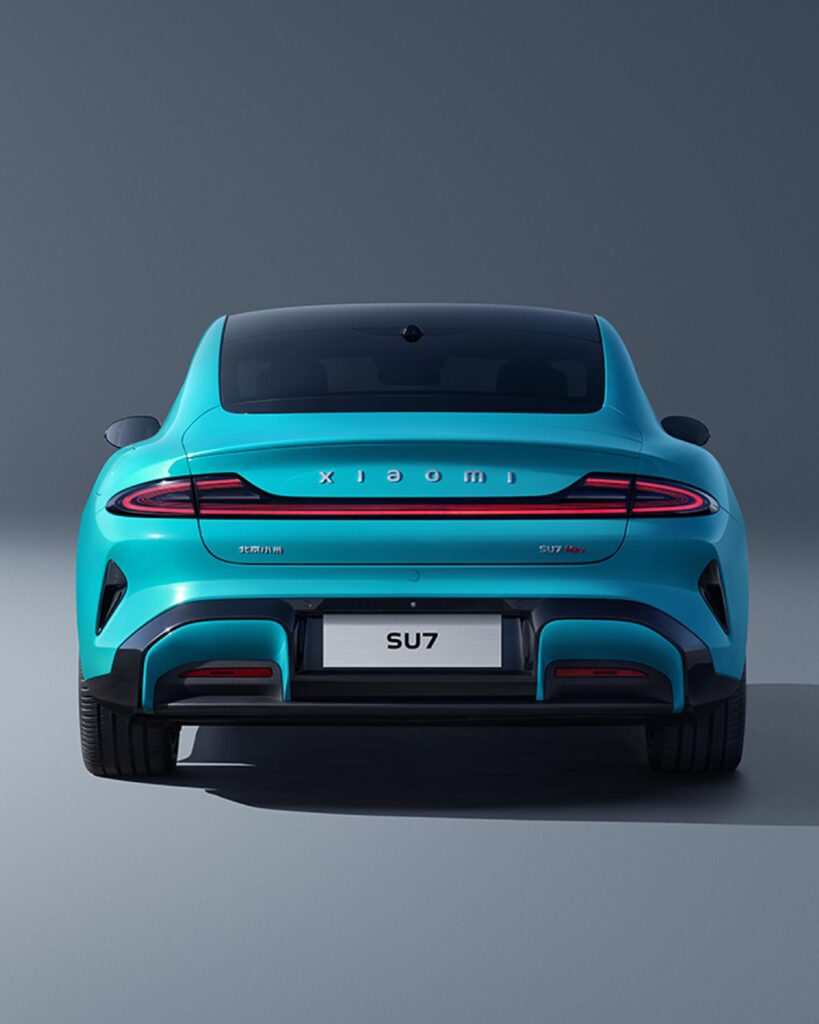
جدول المحتويات
E-motor
Xiaomi SU7, At the conference, Xiaomi showcased its independently developed and manufactured E-motors, HyperEngine V6/V6s and HyperEngine V8s. The three E-motors, which employ innovative technologies such as bi-directional full oil cooling technology, S-shaped oil circuit design, and staggered silicon steel lamination design, rival the performance of traditional large V8 and V6 powertrains from the era of internal combustion engines, pushing the industry’s performance limits to new heights. In particular, the HyperEngine V8s set a world record for electric motors with a top speed of 27,200 rpm, 425 kW of power and 635 N-m of peak torque. To achieve the industry-exceeding standard of 27,200 rpm, HyperEngine V8s uses the industry’s first ultra-high-strength silicon steel plate with a tensile strength of 960MPa, more than twice the strength of the industry’s mainstream offerings.
In terms of cooling design, the HyperEngine V8s adopts bi-directional full oil cooling technology and an S-shaped oil circuit design. For the stator, a bi-directional oil circuit is used, which increases the heat dissipation area by 100% and achieves a cooling effect of up to 20°C. Meanwhile, the rotor section uses a patented S-shaped oil circuit, which increases the heat dissipation area by 50% and achieves a cooling effect of up to 30°C. In addition, the stator’s silicon steel fins are staggered in a “step-like” design, increasing the effective heat dissipation area by a further 7%. HyperEngine V8s is under development and is expected to be mass produced and implemented in Xiaomi EVs in 2025.
Xiaomi’s proprietary HyperEngine V6/V6s electric motors boast an industry-leading rotational speed of 21,000 rpm, surpassing the world’s most powerful mass-produced electric motor. Among them, the HyperEngine V6 super motor has a maximum output of 299 hp and a maximum torque of 400 N-m, while the HyperEngine V6s super motor achieves a maximum output of 374 hp and a maximum torque of 500 N-m.
بطارية
Xiaomi SU7, Xiaomi has also self-developed CTB integrated battery technology through innovative inverted cell technology, multifunctional elastic interlayer and minimalistic wiring system; it features a battery integration efficiency of 77.8%, the highest among CTB batteries worldwide, an overall performance improvement of 24.4% and a height reduction of 17mm, with a maximum battery capacity of up to 150kWh and a theoretical CLTC charging range of over 1200km.
To ensure stable performance during long journeys, Xiaomi has adopted industry-leading safety design standards. The downward pressure relief valve quickly releases energy in extreme situations, maximising passenger cabin safety. A robust 14-layer physical protection system includes three layers of top support, three layers of side protection and eight layers of bottom protection.
In terms of heat dissipation, a dual-sided water cooling solution uses heat dissipation plates on both long sides of the battery cells, providing a cooling area of 7.8m² – four times the industry average. The sides of the battery cells feature 165 pieces of aerogel insulation material, which can withstand temperatures up to 1000°C.
Xiaomi EV is equipped with an in-house developed battery management system (BMS) with ASIL-D, the highest functional safety level. This BMS includes three independent thermal runaway monitors and alarms, as well as a round-the-clock early warning system. Every Xiaomi battery boasts industry-leading reliability and is subjected to the most stringent battery safety tests, including over 1050 safety checks and 96 times the international standard durability test duration.
Xiaomi Die-Casting
Xiaomi has unveiled its self-developed Xiaomi Die-Casting T9100 cluster and proprietary die-casting alloy material, Xiaomi Titans Metal, making it the only domestic automaker to simultaneously self-develop both large-scale die-casting and materials.
Xiaomi Die-Casting T9100 covers an area of 840m², with a total weight of 1050t and a locking force of 9100t. Xiaomi has developed a basic model quality assessment system that can complete the inspection of each part within 2 seconds, which is ten times more efficient than manual inspection. The application of this cluster enables a remarkable achievement for the Xiaomi EV: the rear underbody integrates 72 components into one, reducing the number of welds by 840, reducing the overall weight of the car by 17%, and significantly reducing production hours by 45%.
In terms of materials research and development, Xiaomi has developed Xiaomi Titans Metal, a high-strength, high-resilience, heat-treated die-cast material. Xiaomi’s proprietary “Multi-Material Performance Simulation System” selects the optimal alloy formula from 10.16 million possibilities, ensuring a perfect combination of strength, resilience and stability.
While the industry focuses on die-casting tonnage, Xiaomi consistently pursues a full-stack self-investigation path. From materials and equipment clusters to finished castings, Xiaomi has completed almost all aspects of the large-scale die-casting industrial chain.
The Xiaomi Pilot – Autonomous Driving
In the field of intelligent software technology, Xiaomi has demonstrated its unique advantage as a global technology leader, driving the integration of the automotive and consumer electronics industries with intelligent ecosystems. In autonomous driving, Xiaomi has pioneered three key technologies: Adaptive BEV Technology, Road Mapping Foundational Model, and Super-Res Occupancy Network Technology.
Adaptive BEV Technology is an industry-leading innovation that invokes different perception algorithms depending on the scenario. The perception grid has a minimum granularity of 5cm and a maximum of 20cm, with a detection range of 5cm to 250m. This technology ensures wider visibility in urban scenarios, extended vision in high-speed scenarios and greater precision in parking scenarios.
The Road-Mapping Foundational Model revolutionizes traditional methods of perceiving road conditions. This model not only detects road conditions in real time and intelligently switches to a more appropriate driving path, but also learns from complex intersection scenarios and experienced driver habits to navigate smoothly through complex intersections without relying on high-resolution maps.
In terms of obstacle detection, Xiaomi’s Super-Res Occupancy Network technology achieves unlimited categories of detection for irregular obstacles. Compared to traditional networks that interpret obstacles as blocks, Xiaomi’s innovative vector algorithm simulates all visible objects as continuous curved surfaces. This improves detection accuracy to as close as 0.1m. In addition, Xiaomi’s proprietary one-click noise reduction eliminates the impact of rain and snow on recognition, significantly reducing the likelihood of misidentification.
In addition to the road mapping foundation model, Xiaomi has also independently developed the world’s first production-ready ‘end-to-end sensing and decision-making AI model’ for automated parking. This model enables real-time obstacle detection.
Smart Cabin
The Xiaomi EV Smart Cabin adopts a “human-centric” interaction architecture and features a 16.1-inch 3K central console, a 56-inch HUD head-up display, a 7.1-inch rotating dashboard and two seat-back extension mounts that can accommodate two tablet devices. It is equipped with the Snapdragon 8295 in-car chip with up to 30 TOPS of AI processing power, enabling the ultimate interactive experience by connecting five different screens.
The interactive experience of Xiaomi Smart Cabin is similar to that of tablets, allowing users to adapt quickly without the need for a learning curve. The system works exceptionally smoothly, with the car’s operating system starting up in just 1.49 seconds after the door is unlocked. It also provides seamless cross-device connectivity between smartphones and the EV. For example, when the phone is brought into the cabin, an icon is automatically displayed on the console for easy one-touch access to the phone’s interface.
The in-vehicle operating system seamlessly integrates popular applications, including the entire Xiaomi tablet application ecosystem, with more than 5,000 applications gradually being added. Smartphone applications can be conveniently pinned to the car console, instantly transforming them into in-car applications. In terms of hardware integration, the Xiaomi SU7 supports over 1000 Xiaomi smart home devices for effortless integration with the vehicle, enabling automatic discovery, password-free access and the ability to set up automation scenarios, creating a robust CarIoT ecosystem. The car interior also features dedicated pin-point expansion ports, supporting plug-and-play functionality for a wide range of devices. To meet the needs of users, Xiaomi EV fully supports CarPlay, iPad and iPad accessories mounting, and applications on the rear extension mount.
Frequently Ask Questiones:
what is the price of xiaomi su7
The price of the Xiaomi SU7 is expected to be around RMB 300,000 yuan (approximately $42,180)
when will the xiaomi su7 be available for purchase
he Xiaomi SU7, an electric vehicle (EV), is planned to be released in 2024



